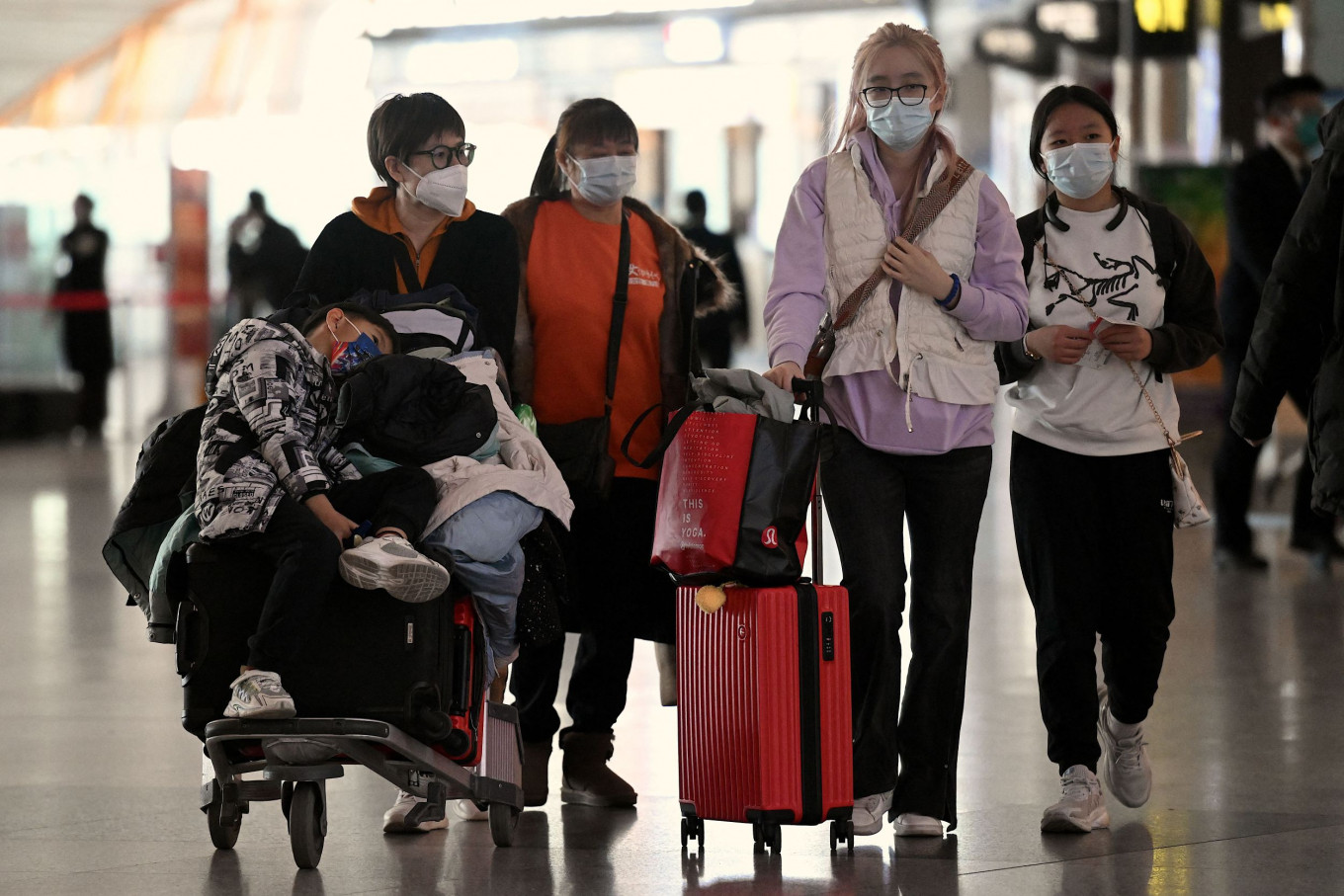Popular Reads
Top Results
Can't find what you're looking for?
View all search resultsPopular Reads
Top Results
Can't find what you're looking for?
View all search resultsBali welcomes first flight from mainland China
About 210 people were on board the charter flight operated by Jakarta-based Lion Air from Shenzhen.
Change text size
Gift Premium Articles
to Anyone
B
ali welcomed on Sunday the first flight from mainland China since all flights were stopped in February 2020 due to the COVID-19 pandemic.
About 210 people were on board the charter flight operated by Jakarta-based Lion Air from Shenzhen in China’s southern Guangdong province and landed at Ngurah Rai International Airport on Sunday at 10:40 a.m. The flight coincided with the start of the Chinese New Year and amid concerns of surging COVID-19 infections in China after Beijing relaxed pandemic curbs.
“They will stay in Bali for six nights,” Bali Tourism Agency head Tjok Bagus Pemayun told The Jakarta Post.
Pemayun said that the charter flight would give new hope to Bali tourism. “It will provide the momentum to woo Chinese travelers back to Bali,” he said.
Before the pandemic, Chinese tourists were the second-greatest nationality of travelers that visited Bali. The largest number of foreign travelers to the resort island come from Australia.
In 2017 and 2018, Chinese travelers outnumbered Australians. In 2017, authorities recorded 1.38 million Chinese travelers out of a total 5.69 million foreign travelers to Bali. Australian travelers were second with 1.09 million.
In 2018, the number of Chinese travelers slightly decreased to 1.31 million travelers, although the total number of foreign travelers visiting Bali has increased to 6.01 million. A total of 1.16 million Australian travelers were recorded that year.
The COVID-19 pandemic has significantly cut the number of foreign travelers to Bali. In 2021, there were only 51 foreigners visiting Bali with no travelers from China.
In 2022, Bali tourism started to lift with a total of 2.15 million foreign travelers visiting. The largest group of visitors was those of Australian nationality with a total of 511,590, followed by Indian visitors with 146,111.
Lion Air spokesperson Danang Mandala Prihantoro said the company would now operate one direct flight from Bali to Shenzhen every Saturday and one from Shenzhen to Bali every Sunday.
According to state-owned airport operator PT Angkasa Pura I general manager Handy Heryudhitiawan, there had not been any regular direct flight from mainland China into Bali since the pandemic. However, people from mainland China could access flights via Taipei and Hong Kong.
Asian tourism-focused businesses are celebrating China's border reopening as businesses around Asia rekindle ties with the region's largest economy.
China was the world's largest outbound tourism market before the pandemic, and the absence of its once-US$255 billion of annual spending since borders were shut three years ago has led to financial trouble for many tourism-dependent businesses and employee
But some businesses in the region are striking a more cautious note, as many countries implement travel restrictions that require Chinese visitors to take predeparture COVID-19 tests and cap-flight numbers to and from the mainland.
International flights to and from China remain at only 11 percent of 2019 capacity, Cirium data showed, leading to high air fares ahead of the week-long Lunar New Year holiday beginning on Jan. 21.
China reported nearly 13,000 COVID-related deaths in hospitals between Jan. 13 and 19, but there has been widespread skepticism over official data since Beijing abruptly axed antivirus controls last month, AFP reported.
Airfinity, an independent forecasting firm, estimated daily COVID-19 deaths in China would peak at around 36,000 over the Lunar New Year holiday. The firm also estimated that more than 600,000 people had died from the disease since China abandoned the zero-COVID policy in December.
But a top health official said China would not experience a second wave of COVID-19 infections in the next two to three months after millions returned to villages to mark the Lunar New Year because nearly 80 percent of the population had already been infected by the virus, AFP reported.










